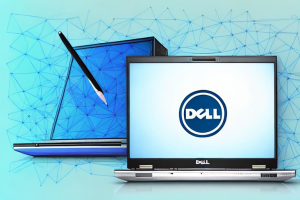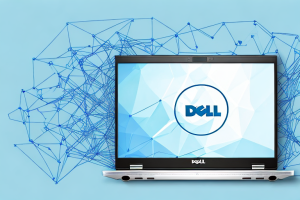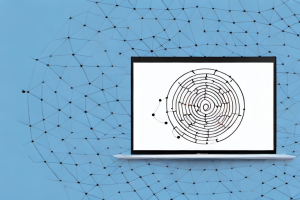How to replace a faulty hard drive on a Dell Latitude E7450
9 min read
A dell latitude e7450 laptop with the hard drive removed
If you’re experiencing problems with your Dell Latitude E7450, one possible culprit could be a faulty hard drive. While this can be a frustrating issue, the good news is that replacing a hard drive is typically a straightforward process that can be completed with the right tools and knowledge. In this article, we’ll walk through the steps involved in replacing a faulty hard drive on your Dell Latitude E7450, from identifying the symptoms of a failing hard drive to selecting and installing a new one. Let’s get started!
Identifying the symptoms of a faulty hard drive on a Dell Latitude E7450
The first step in replacing a faulty hard drive on your Dell Latitude E7450 is to determine if this is indeed the issue. Some common symptoms of a failing hard drive include slow performance, frequently crashing or freezing, and strange noises coming from the computer. Additionally, you may notice that files or folders are becoming corrupted or that you’re receiving error messages related to the hard drive. If you’re experiencing any of these issues, it’s worth investigating further to see if a faulty hard drive is to blame.
Another symptom of a faulty hard drive on a Dell Latitude E7450 is the infamous “blue screen of death” error message. This error message occurs when the operating system encounters a critical error and is unable to recover. If you see this error message, it’s important to back up your data immediately and seek professional help to replace the hard drive.
Understanding the types of hard drives compatible with Dell Latitude E7450
Before you can replace your hard drive, it’s important to know what type of drive is compatible with your computer. The Dell Latitude E7450 is compatible with both solid-state drives (SSDs) and traditional hard disk drives (HDDs). Generally speaking, SSDs tend to offer faster performance and improved reliability, but they’re also more expensive than HDDs. Ultimately, the choice depends on your budget and performance needs.
It’s also worth noting that the Dell Latitude E7450 has a maximum storage capacity of 1TB for both SSDs and HDDs. If you require more storage space, you may want to consider an external hard drive or cloud storage options. Additionally, when replacing your hard drive, it’s important to make sure you have the necessary tools and knowledge to do so safely. If you’re unsure, it’s recommended to seek professional assistance to avoid damaging your computer.
Tools and equipment needed for replacing a faulty hard drive on Dell Latitude E7450
Once you’ve identified the problem and selected a replacement hard drive, it’s time to gather the tools and equipment you’ll need to complete the installation. You’ll likely need a screwdriver (often a Phillips-head), an external hard drive or other backup solution to transfer your data, and either an SSD or HDD to use as your new drive. Additionally, you may need a Windows installation disc or USB drive to reinstall your operating system.
It’s important to note that before beginning the replacement process, you should ensure that you have a clean and organized workspace. This will help prevent any damage to your laptop or the new hard drive during the installation process. You may also want to consider using an anti-static wrist strap to prevent any static electricity from damaging your laptop’s components.
Backing up your data before replacing a faulty hard drive on Dell Latitude E7450
Before you begin the hard drive replacement process, it’s important to back up your data to ensure that you don’t lose any important files or documents. This can be done by copying your files to an external hard drive, using a cloud storage service, or utilizing a backup software tool. Whatever method you choose, make sure that you’ve saved all critical files and that you have a plan for restoring them once your new hard drive is installed.
It’s also important to note that backing up your data should be a regular practice, not just before replacing a faulty hard drive. This can help prevent data loss in case of unexpected hardware failure or other issues. Consider setting up automatic backups or scheduling regular manual backups to ensure that your data is always protected.
Additionally, if you’re not comfortable with backing up your data yourself, consider seeking the help of a professional. Many computer repair shops offer data backup services, and they can ensure that your files are safely backed up and restored after the hard drive replacement process is complete.
Removing the old hard drive from your Dell Latitude E7450
Once your data is safely backed up, you’re ready to begin the actual hard drive replacement process. Start by shutting down your computer and disconnecting all cables and peripherals. Then, locate the compartment on the bottom of your Dell Latitude E7450 that houses the hard drive. This will typically be marked with a small hard drive icon or a label indicating that it’s the hard drive compartment.
Using your screwdriver, remove any screws that are securing the compartment cover in place. Carefully lift off the cover to reveal the hard drive. Depending on how the drive is positioned, you may need to remove additional screws or brackets to fully remove the drive from the compartment. Once you’ve done so, disconnect any cables or connectors that are attached to the hard drive and set it aside.
It’s important to note that not all hard drives are created equal. When purchasing a replacement hard drive for your Dell Latitude E7450, make sure to check the specifications to ensure that it’s compatible with your laptop. You’ll want to pay attention to factors such as the size, speed, and interface of the drive to ensure that it will work properly with your system. Once you’ve found a compatible replacement drive, you can proceed with installing it in your laptop.
Selecting and installing a new hard drive in your Dell Latitude E7450
With the old hard drive removed, it’s time to install the new one. Begin by positioning the new drive in the compartment, making sure that it’s properly aligned and secured. Depending on the drive type, you may need to use screws or brackets to hold it in place.
Next, reconnect any cables or connectors that were attached to the old drive. Make sure that everything is connected securely and that there are no loose cables or wires. Finally, replace the compartment cover and reattach any screws or brackets that were removed earlier. Your new hard drive is now installed and ready to go!
It’s important to note that before selecting a new hard drive, you should check the specifications of your Dell Latitude E7450 to ensure that the new drive is compatible. You should also consider the storage capacity and speed of the new drive, as these factors can greatly impact the performance of your laptop. Additionally, it’s recommended to back up any important data before replacing the old hard drive to avoid losing any important files.
Partitioning and formatting your new hard drive in Dell Latitude E7450
Before you can begin using your new hard drive, you’ll need to partition and format it. This basically involves setting up the new drive so that your computer can recognize and utilize it.
You can partition and format your new hard drive using the Disk Management tool in Windows. Simply open the tool, locate your new hard drive, and allocate the desired amount of space for each partition. Then, format the partitions using the NTFS file system to ensure compatibility with Windows and to maximize performance.
It’s important to note that partitioning and formatting your new hard drive will erase all data on it. So, make sure to back up any important files before proceeding with this process. Additionally, if you’re unsure about how to partition and format your new hard drive, it’s always a good idea to consult the manufacturer’s instructions or seek assistance from a professional.
Restoring your data onto the new hard drive in Dell Latitude E7450
With your new hard drive installed and formatted, it’s time to restore your data. This can typically be done by copying your backed-up files back onto the new drive or using a backup and restore software tool. Just make sure that you carefully follow the instructions for the tool that you’ve chosen and that you don’t accidentally overwrite any important files.
If you don’t have a backup of your data, you may still be able to recover some of it using data recovery software. However, this can be a time-consuming and uncertain process, and there’s no guarantee that you’ll be able to recover all of your files.
Once you’ve restored your data, it’s a good idea to test your new hard drive to make sure that everything is working properly. You can do this by running a diagnostic test or by simply using your computer as you normally would. If you notice any issues or errors, it’s important to address them as soon as possible to avoid any further data loss or damage to your system.
Testing the new hard drive to ensure it’s working correctly on Dell Latitude E7450
Once you’ve restored your data and everything is set up, it’s a good idea to test your new hard drive to make sure that it’s working correctly. This can be done by running a diagnostic test using the manufacturer’s tools or by simply using your computer as you normally would.
If you notice any issues or errors, double-check that your connections and settings are correct. Otherwise, your new hard drive should be ready to go and working as intended!
Troubleshooting common issues after replacing a faulty hard drive on Dell Latitude E7450
Even with careful planning and execution, sometimes issues can arise after replacing your hard drive. One common problem is difficulty booting up your computer or accessing your operating system. This can often be resolved by reinstalling your operating system using your installation disc or USB drive.
Another possible issue is compatibility problems with your hardware or software. If you’re experiencing any problems after installing your new hard drive, check to see if there are any software or driver updates available that could resolve the issue.
Tips for maintaining your new hard drive on Dell Latitude E7450
Finally, it’s important to take care of your new hard drive to ensure that it lasts as long as possible. Some tips for maintaining your drive include keeping it clean and free of dust and debris, avoiding extreme temperatures or humidity, and running regular scans for malware or other viruses.
Frequently asked questions about replacing a faulty hard drive on Dell Latitude E7450
Q: How can I tell if my hard drive is failing?
A: Some common symptoms of a failing hard drive include slow performance, freezing or crashing, and strange noises.
Q: Should I choose an SSD or HDD to replace my hard drive?
A: The choice depends on your budget and performance needs. SSDs offer faster performance and improved reliability, but they’re more expensive than HDDs.
Q: Do I need special tools to replace my hard drive?
A: You’ll need a screwdriver (often a Phillips-head) and may need additional tools depending on your specific Dell Latitude E7450 model.
Q: How long does it take to replace a hard drive?
A: The actual replacement process typically takes less than an hour, but time spent backing up and restoring your data will increase the overall time.
Q: Will I lose my data when replacing my hard drive?
A: Unless you back up your data beforehand, there is a risk of data loss during the replacement process.
Congrats, you’re now ready to replace a faulty hard drive on your Dell Latitude E7450!


